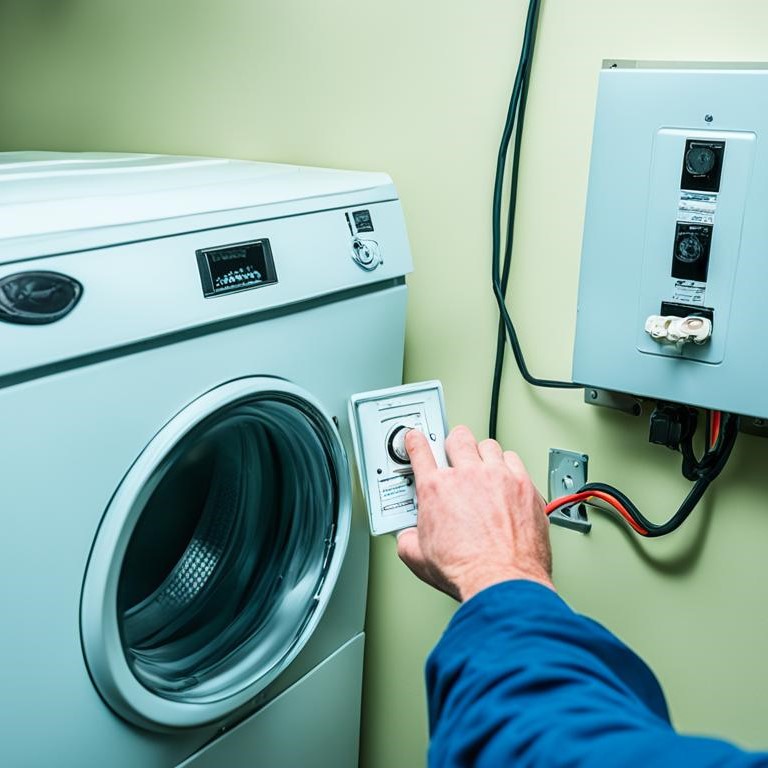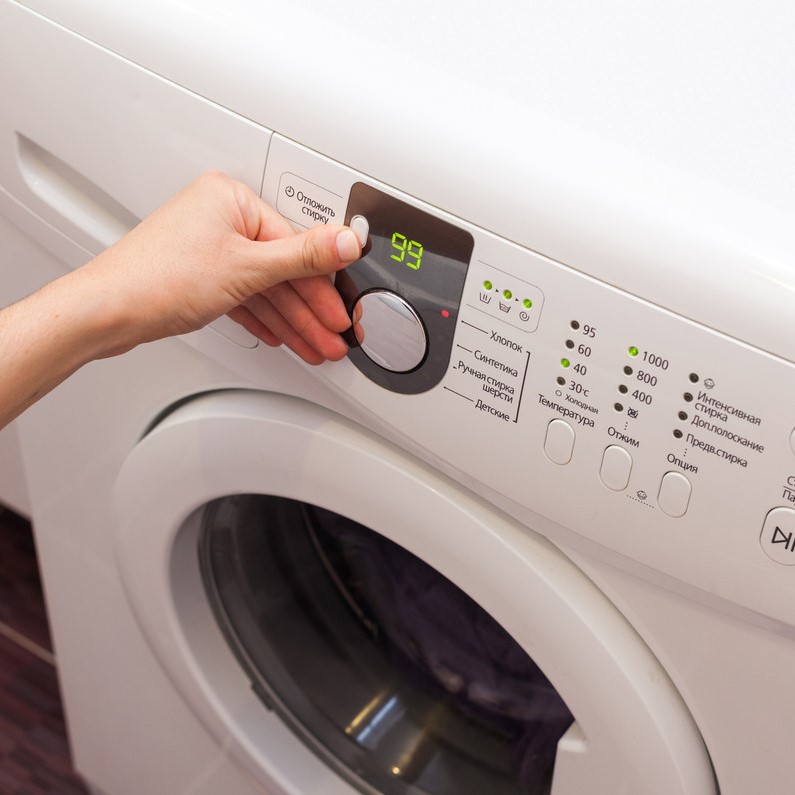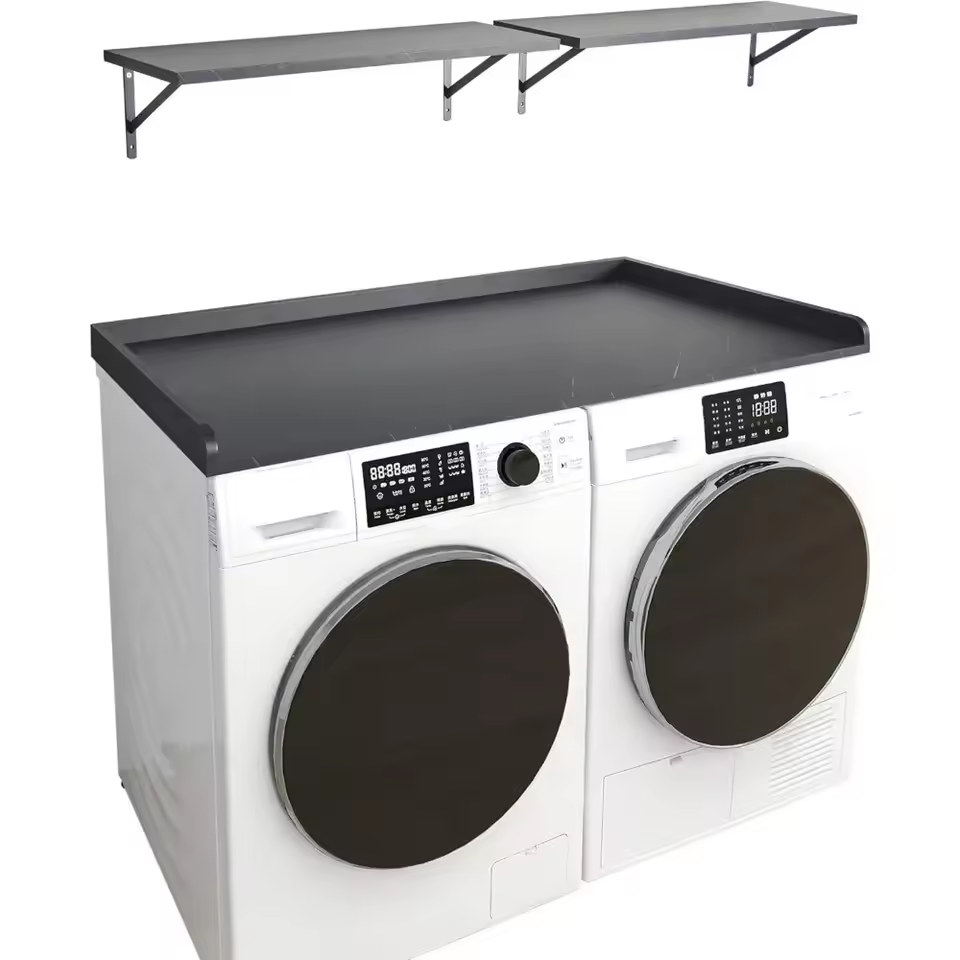Troubleshooting a Dryer Is Not Drying Clothes: Step-by-Step Guide
Introduction: Understanding the Problem of a Dryer That’s Not Drying Clothes
If you find yourself facing a situation where your dryer is not drying clothes, you’re not alone. Many homeowners encounter this frustrating issue at some point. Essentially, a dryer that fails to perform its primary function can cause delays in your laundry routine and increase frustration at home. In this step-by-step guide, we will explore common reasons your dryer may not be drying clothes effectively and provide you with troubleshooting tips to help you identify and resolve the issues. Ultimately, by following these steps, you may save time and money by addressing the issue yourself instead of calling for professional help.
 Common Reasons Your Dryer is Not Drying Clothes
Common Reasons Your Dryer is Not Drying Clothes
Lint Buildup Causing Poor Heat Dissipation
One of the most common issues behind a dryer is not drying clothes is lint accumulation blocking airflow. According to the National Fire Protection Association, approximately 15,000 house fires occur each year due to dryer lint buildup. Lint can accumulate in the lint trap, the vent hose, and the external vent, leading to significantly reduced airflow, overheating, and ultimately causing the dryer to stop drying properly.
Detection Steps:
To begin, remove the lint filter and inspect it. If it’s caked with lint, clean it thoroughly using your hand or a soft brush. For deeper cleaning, wash the filter with soapy warm water every month to ensure that fabric softener or other residues do not restrict airflow. Next, check the vent duct leading from the dryer to the outside of your home. Detach it from the back of the dryer and look for any instances of blockages. Use a flexible duct brush or a vacuum cleaner attachment to remove the lint buildup inside the ducting.
If, after cleaning, your dryer still fails to dry, it’s crucial to inspect the exterior vent cover as well. A clogged vent cover, even partially blocked, can severely restrict airflow. You should be able to open this cover easily; if it does not move freely, it’s time to give it a thorough clean.
Repair Cost Estimate:
Cleaning the lint filter and duct can usually be done without any financial strain. Most homeowners can complete these tasks themselves, incurring no costs or just a few dollars for cleaning supplies. Hiring professionals to perform a thorough cleaning, however, might cost between 50 to 150 based on service fees.
User Case:
Consider a family of four who struggled with a dryer that seemed to run endlessly, yet their clothes remained stubbornly damp. After they took the time to clean the lint filter and clear out the ducts, they discovered that their drying times decreased dramatically. This simple act not only alleviated the lengthy delays but also improved the dryer’s efficiency, ensuring they could manage their laundry in a more timely manner.
Thermostat Malfunction Leading to Inadequate Heating
A faulty thermostat can prevent the dryer from reaching the temperatures required to adequately dry clothes. This issue can manifest as the dryer feeling warm but not effectively drying laundered items.
Detection Steps:
To check the thermostat, first ensure the dryer is completely disconnected from power for your safety. Then, access the thermostat, usually found on the blower housing or near the heating element, depending on your dryer model. Use a multimeter to test the thermostat for continuity; this measurement will tell you whether it’s still functional. If there’s no continuity, you’ll need to replace the thermostat to restore proper function.
Additionally, if your dryer has a thermal fuse, it’s worth inspecting that as well, as it may blow if the dryer overheats, shutting down the heating element. A blown thermal fuse will also prevent the thermostat from functioning properly, leading to inadequate heating.
Repair Cost Estimate:
Typically, replacing a thermostat comes with a price range of 20to60 for part costs. If you opt for a technician’s help, labor charges may range from 75 150 depending on local rates.
User Case:
A user noticed their dryer was cool to the touch, even after running a full drying cycle. Upon checking the thermostat and replacing it with the help of a DIY instructional video, they succeeded in restoring the dryer’s heating capability, allowing them consistent use without further issues.
Broken Belt Causing the Drum to Not Spin
If the dryer drum isn’t spinning when you start a cycle, it is a clear indication that you likely have a broken drive belt. A broken belt often causes the dryer to run while doing little to no actual drying.
Detection Steps:
Start by safely disconnecting the dryer from power, then remove the front or rear panel, depending on the model. Visually inspect the belt; if it is worn, broken, or off the pulley, it needs to be replaced. Also, check the tensioner pulley for smooth operation—if it’s stuck or damaged, it may require replacement as well.
In addition, when performing this inspection, it can be beneficial to examine the drum for any obstructions that may prevent it from turning freely.
Repair Cost Estimate:
The typical cost for purchasing a replacement dryer belt is relatively low, generally between 10 25. If the repair requires professional assistance, you may expect labor costs to add another 75 100 to the expenses.
User Case:
One concerned homeowner found their dryer would finish cycles with the timer but the clothes were still damp. After investigating, they discovered a broken belt was to blame. Once they sourced the part easily online and made the repair themselves, they experienced immediate results with an effectively drying appliance.
Ventilation Issues
A significant percentage of issues related to drying functionality is linked to ventilation problems. Poor ventilation can lead to longer drying times and even appliance overheating, increasing fire risks.
Monthly Maintenance Suggestions:
Pathway blockage often goes unnoticed. To avoid such issues, you should clean the dryer vent duct monthly. A flexible duct cleaning kit can help you reach and clear accumulated lint and debris that can disrupt airflow.
It’s also recommended to keep the area around your dryer clear to ensure the appliance has adequate breathing room to operate effectively. Additionally, ensure that external vents are not blocked by debris, such as leaves or snow, particularly as seasons change.
Tools Required:
Regular maintenance can require specific tools, such as a flexible duct brush, vacuum with a hose attachment for lint removal, and mild cleaning solutions to keep filters clean. Having these tools on hand can make your regular maintenance efforts much more straightforward.
Annual Calibration:
In addition to regular cleanings, you should consider an annual calibration of the temperature sensors in your dryer. This provides assurance that the appliance maintains an accurate sense of temperature throughout its cycle.
 Comparing Repair Cost: Fuses vs. Main Board
Comparing Repair Cost: Fuses vs. Main Board
When addressing issues, sometimes it’s pivotal to weigh the cost against how critical the repair might be.
Replace a Fuse
For relatively minor repairs, you may find that a quick fix, such as replacing a blown fuse, requires minimal investment. Generally, the cost for a fuse replacement is about $5. This simple task can often be completed within 10 minutes with little technical knowledge or tools required.
Replace the Main Control Board
On the other hand, if you find your dryer’s functionality suffering because of problems with the main control board, be prepared for a hefty price tag. Such repairs can range over $200, and the complexity of replacing or repairing a control board usually requires experienced technical skills. The time involved could take considerably longer than a fuse replacement and may require specialized tools and knowledge.
This insight allows you to make informed choices regarding when to implement DIY solutions compared to consulting professionals.
 Self-Diagnosis for Severity of Issues
Self-Diagnosis for Severity of Issues
Addressing dryer issues can quickly turn into a mentally taxing endeavor for homeowners. Knowing how to accurately gauge the severity of the problem will save you time and money in the long run.
To help in this process, guide yourself with a self-diagnosis checklist, assessing symptoms along with potential diagnoses and recommended actions. For example, if your clothes still feel damp after a complete drying cycle, it might indicate a blocked vent or lint buildup. If you hear unusual noises, it may suggest mechanical failures or the potential for belt issues.
Recognizing these patterns enables you to assess your situation accurately, allowing you to decide if DIY fixes are viable or if you should reach out for professional assistance.
 Evaluating Different Dryer Models
Evaluating Different Dryer Models
As you continue to assess your current dryer or consider acquiring a new one, you must evaluate various options that align with your needs and preferences.
1. LG DLEX9500
This heat pump dryer is recognized for its energy efficiency. It comes equipped with impressive drying technology designed to save energy while offering substantial drying capacity—a great match for families who require an appliance that can handle large loads.
Additionally, the DLEX9500 features self-diagnostic capabilities that make troubleshooting easy by displaying error codes to help users identify issues swiftly. Customer reviews highlight its efficient energy use, reliable performance, and great customer service, making it a popular choice.
2. Samsung DV45H7000
This model features dual temperature control protection that enhances drying capacity and prevents overheating. With good size options available, it incorporates modern technology that efficiently manages drying times.
Moreover, this model provides advanced self-diagnostic features, easily revealing issues with functions while ensuring user satisfaction through effective repairs.
Factors to Consider When Choosing a Dryer
When deciding on the best dryer, evaluate various criteria, including your household size, budget considerations, and energy efficiency. Higher-capacity dryers are ideal for larger families, while budget-friendly options are always available to help keep costs down.
Additionally, understanding potential replacement needs is crucial. Ask yourself whether your current dryer is nearing the end of its lifespan or is experiencing frequent issues. Evaluating your options from a cost-benefit perspective will serve you well when considering a new model.
 Conclusion
Conclusion
In summary, troubleshooting a dryer is not drying clothes involves systematic, practical approaches addressing common issues such as lint buildup, thermostat malfunction, broken belts, and ventilation problems. Performing regular maintenance, including cleaning lint filters and checking vents, can greatly impact your dryer’s efficiency and lifespan.
Ultimately, understanding these issues, left unchecked, can lead to greater financial costs; instead, taking proactive measures can ensure that your laundry efforts are both cost-effective and time-efficient. Don’t hesitate to utilize the advice and steps outlined here to address dryer problems and maintain a smooth laundry routine. With diligence and care, you can keep your appliance functioning optimally for years to come.

